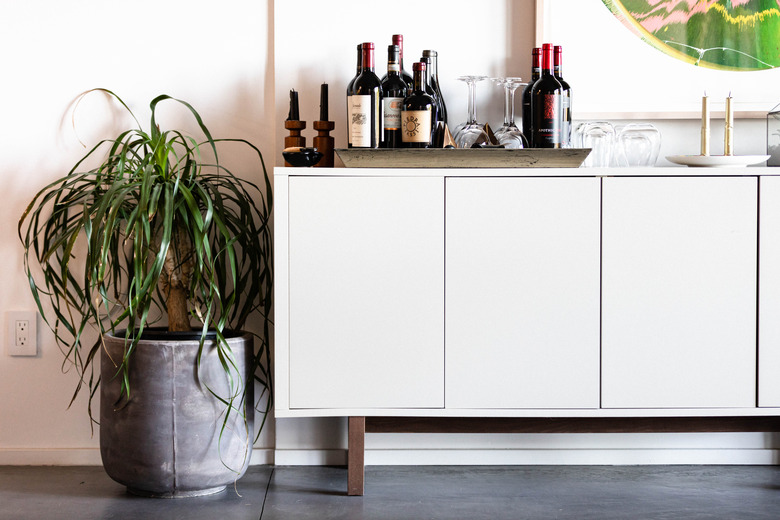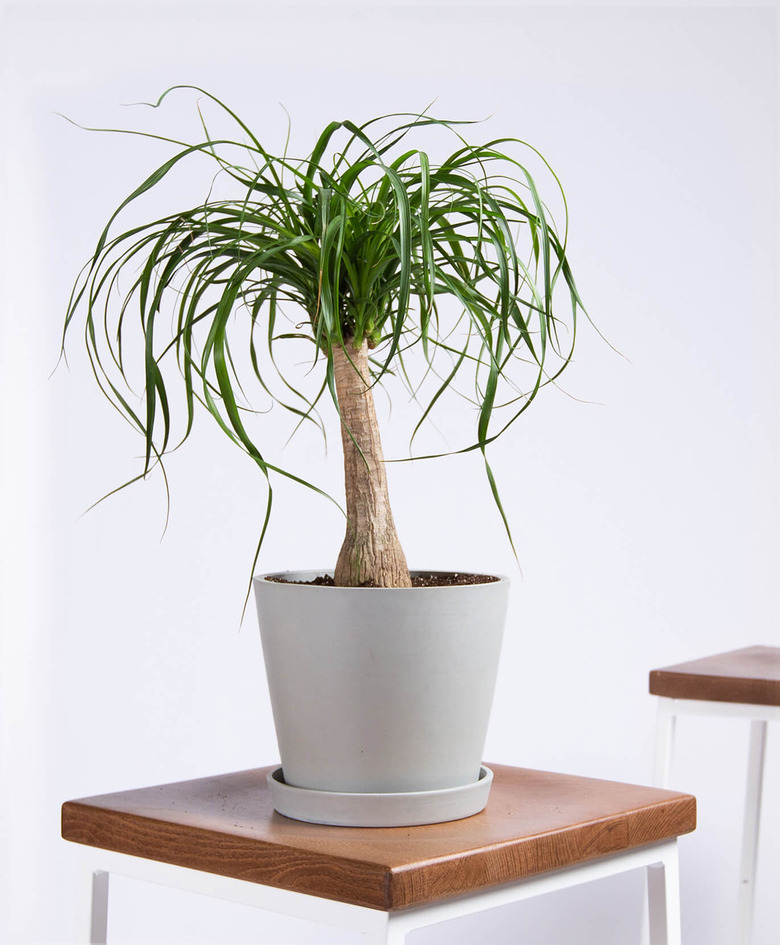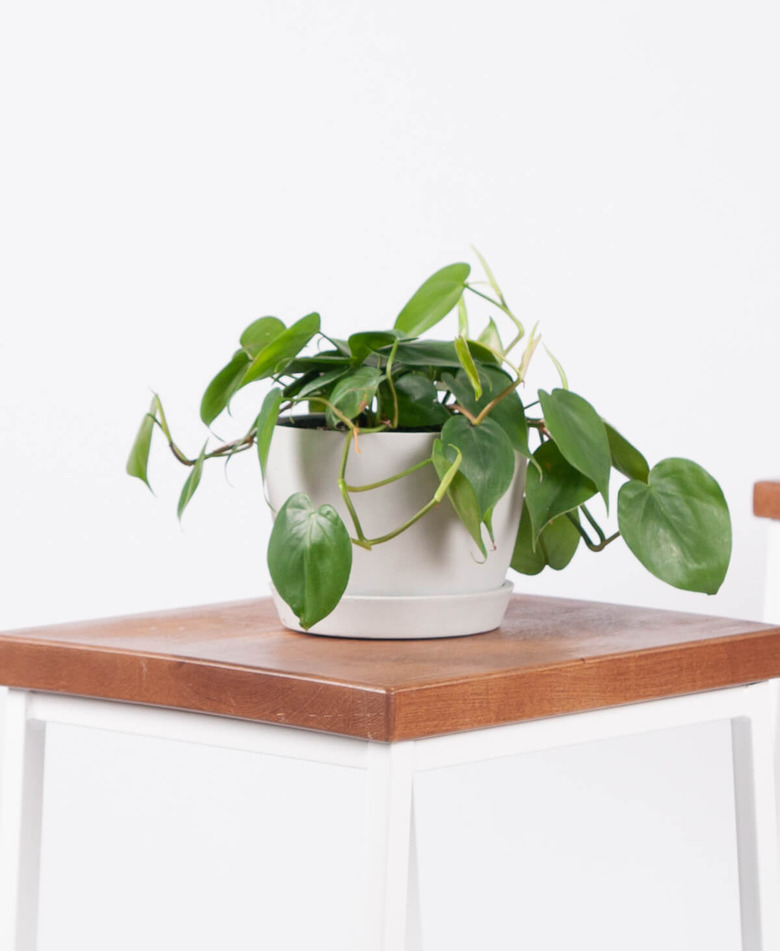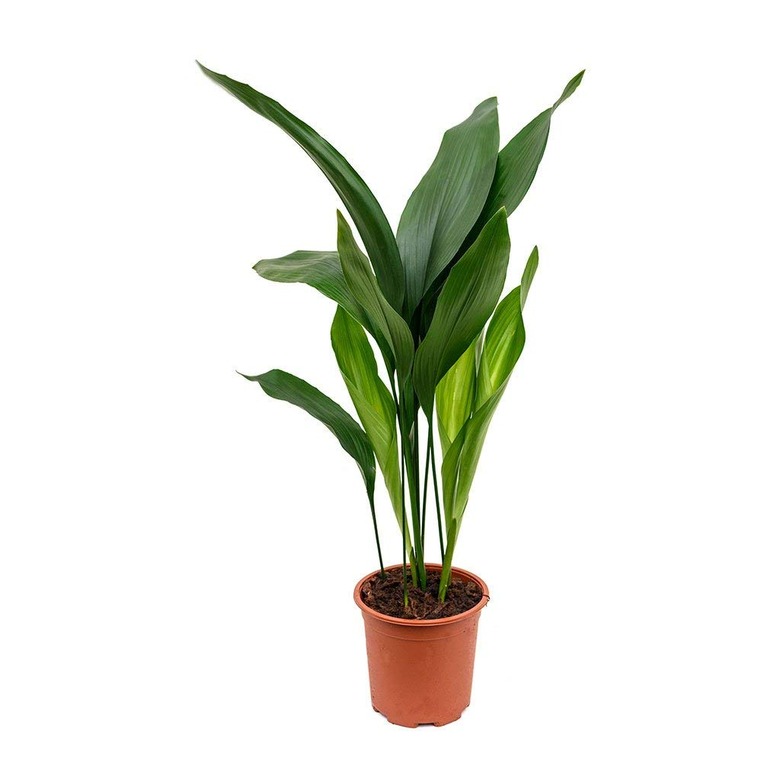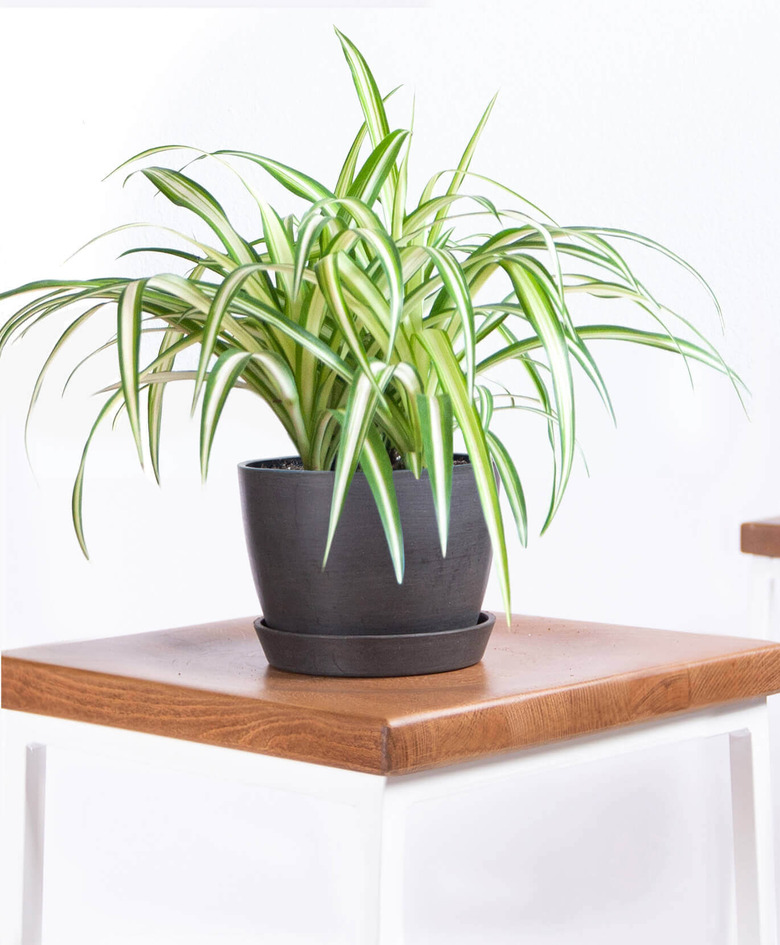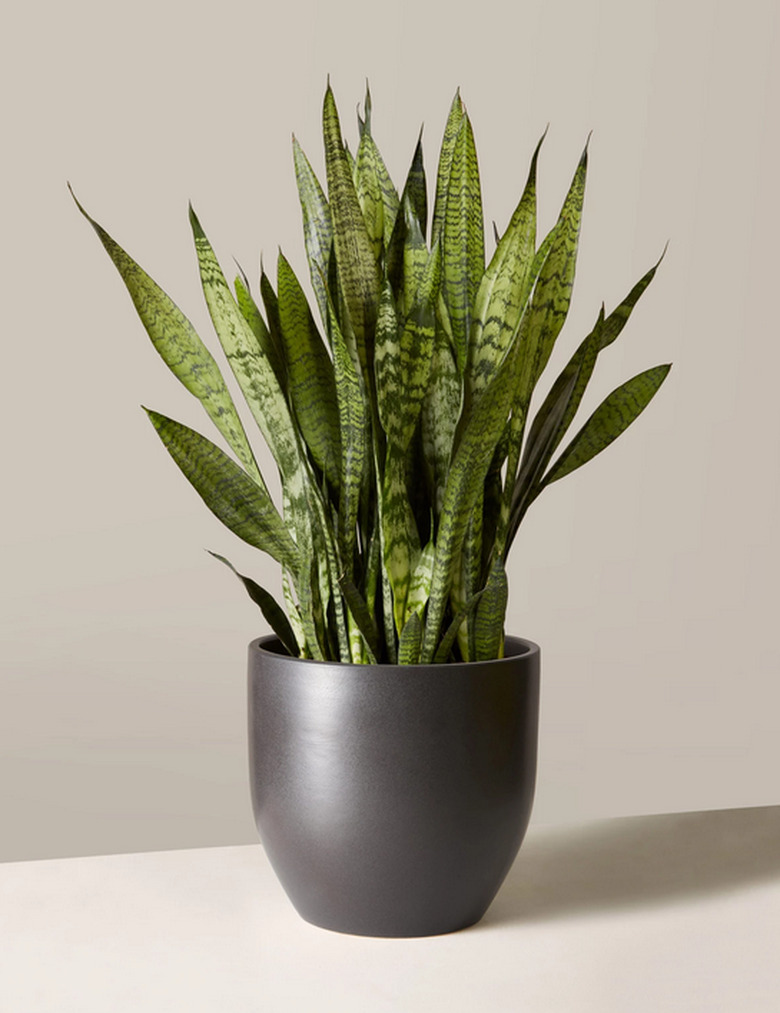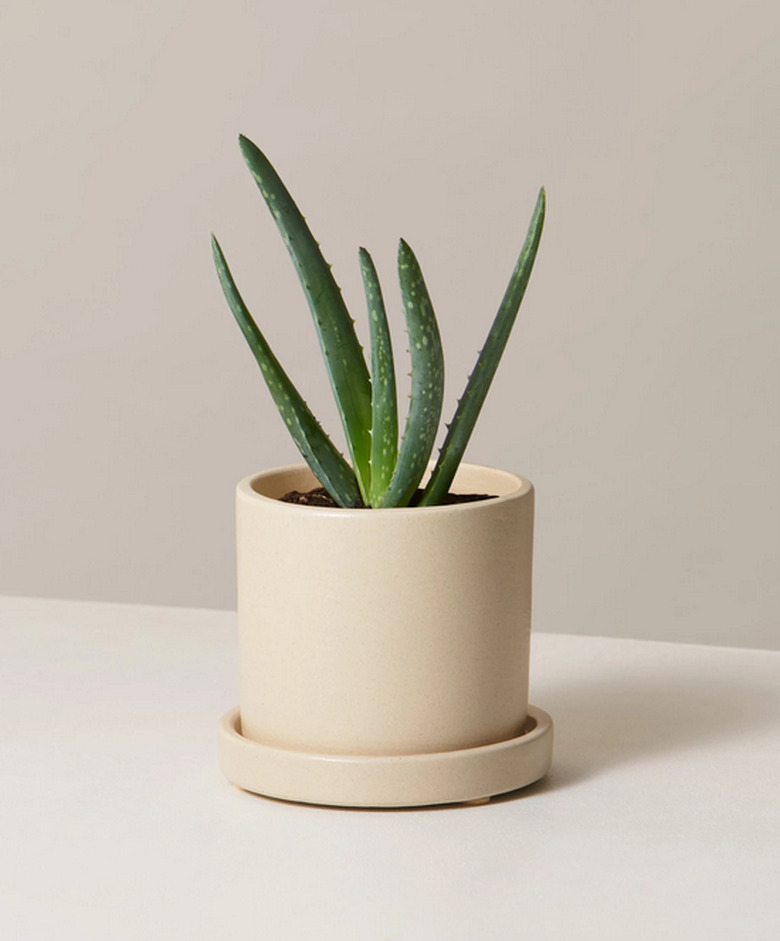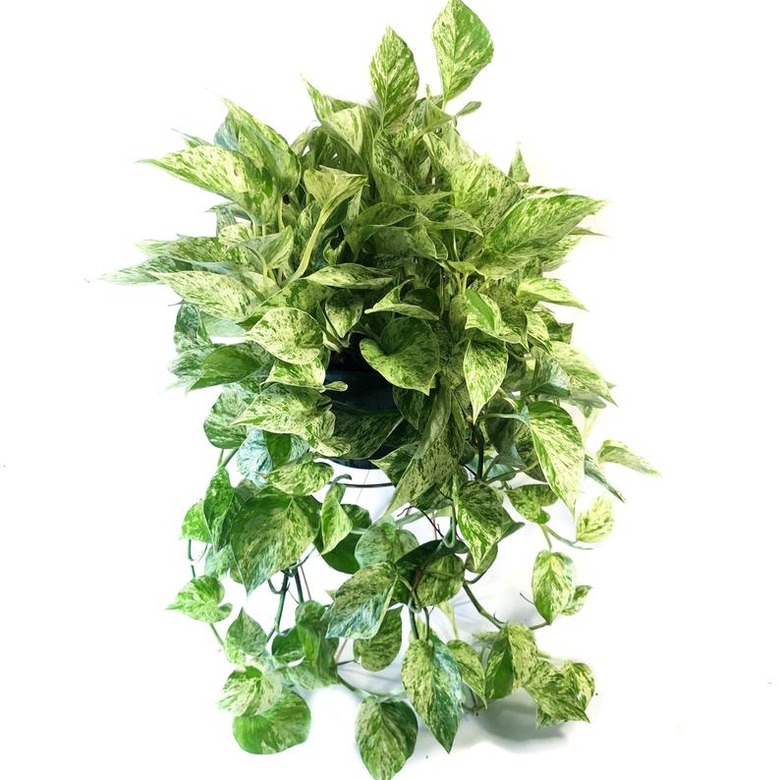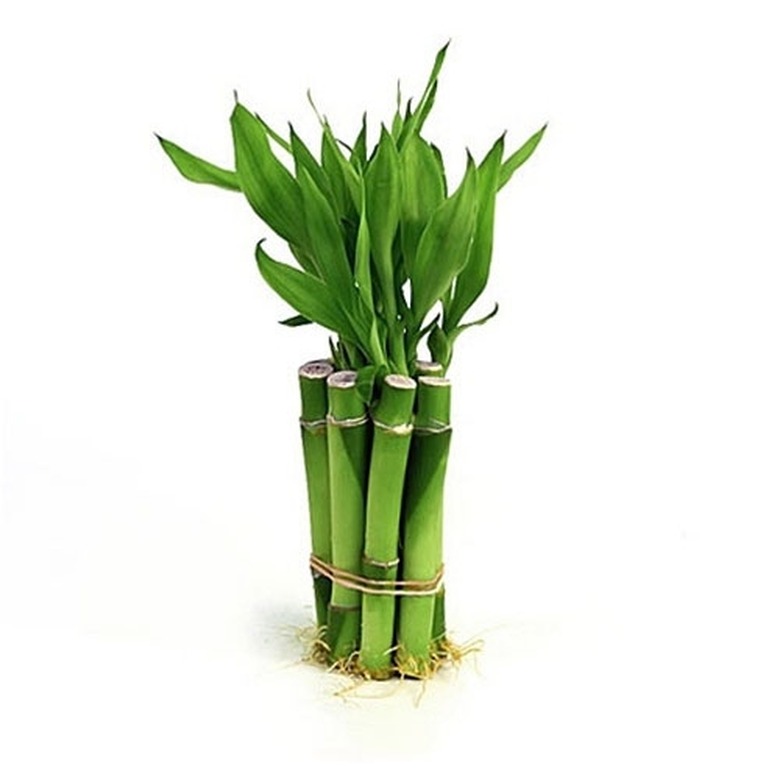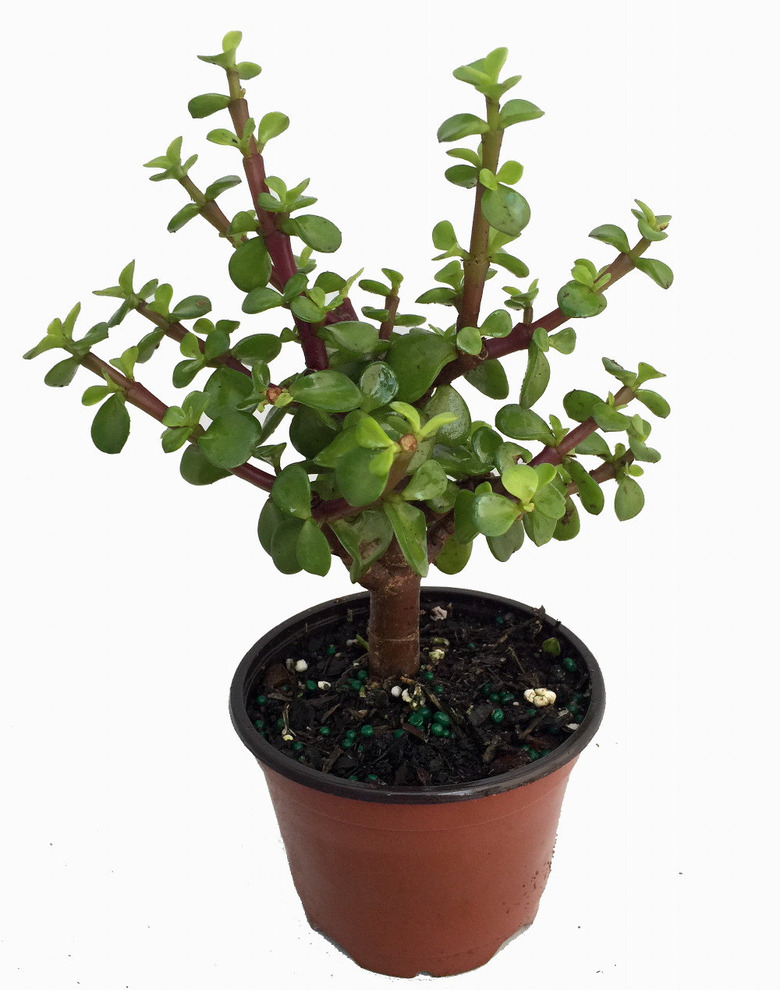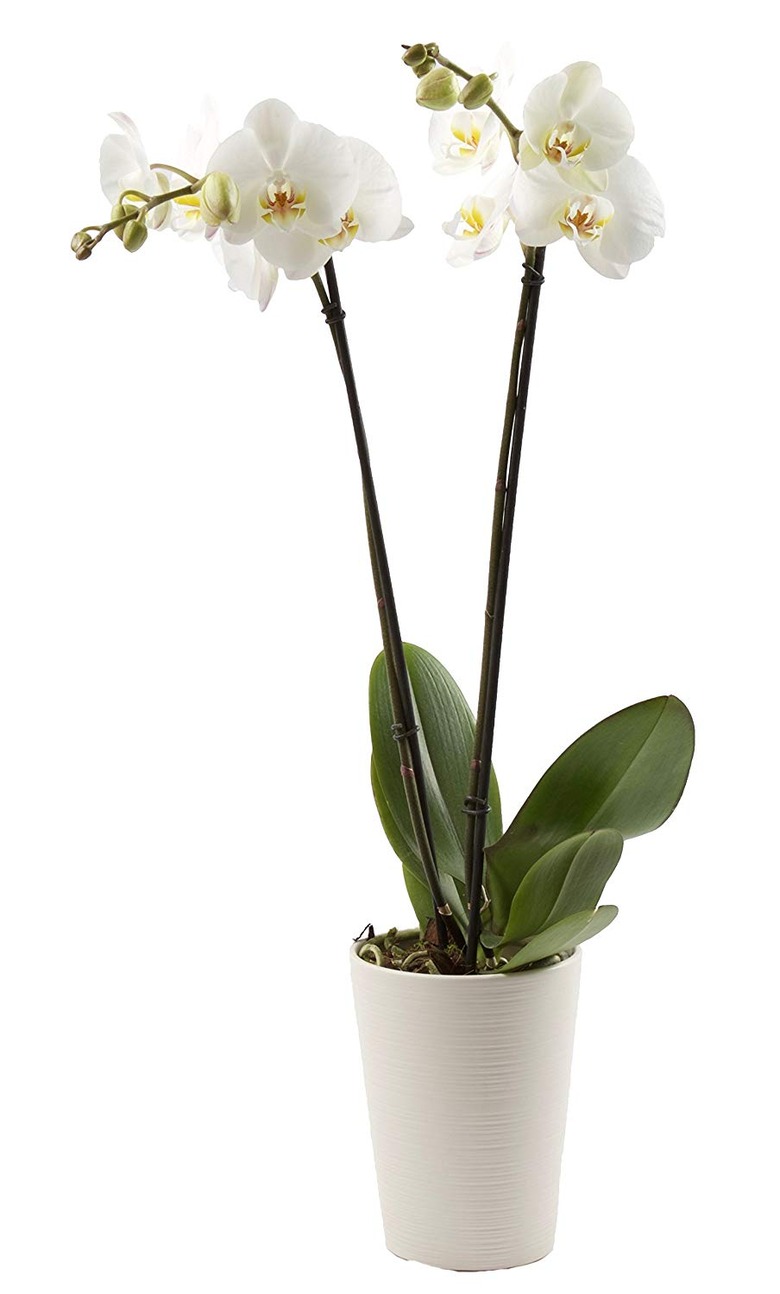If You Travel, These Houseplants Are For You
We may receive a commission on purchases made from links.
Traveling is good for the soul, but it may not feel that way if you come home and find your houseplants wilted and dying. A healthy plant adds bright, hopeful energy to a room, but limp leaves and faded flowers are a real buzzkill.
What's the best way to make sure that your plants are just as perky when you arrive home from the airport as when you packed your carry on? By carefully picking plants that can get by for days and even weeks without human attention. Pick from among these 10 beauties to assure yourself a guilt-free homecoming.
Ponytail Palm
Ponytail Palm
Neither a ponytail nor a palm, this special plant checks all our boxes: small, unique, lush, and graceful. It has a trunk like a miniature palm tree with a canopy made of long, ribbony leaves flowing downward in a wild and wacky botanical display. We swear that the ponytail palm (Beaucarnea recurvata) is just on the cusp between Architectural Digest and Doctor Seuss.
Care: Think of the Mexican desert origins conditions of this yucca species and give it the same: bright light, dry air, and water only when the soil is bone dry. A deep drink before you go means a happy ponytail palm for weeks.
Heartleaf Philodendron
Heartleaf Philodendron
Long and leafy means ambiance and texture. Long and leafy does not mean water hog, at least when it comes to philodendrons (Philodendron hederaceum var. oxycardium). The big, beautiful leaves are the shape of valentines and cascade in lush waves over the sides of the container to 10 feet.
Care: Low light or bright light, the heartleaf thrives but will scorch in direct sun. Only water when the soil in the top half of the container is dry. Irrigate before you go and move into dim light.
Cast Iron Plant
Cast Iron Plant
Brown thumbs, travelers, kids, first time plant owners: the cast iron plant (Aspidistra elatior) is absolutely perfect for you. The odds of it surviving are almost 100%, neglect it though you may. Its dark, shiny, corn-like leaves grow to 2 feet and you may get little purple flowers at the base.
Care: Low light is great for a cast iron plant, and its maintenance schedule is very flexible. You might want to wipe down the long strappy leaves a couple of times a year and water occasionally, when the container soil is dry. If you are away for a few weeks, it's all good.
Spider Plant
Spider Plant
A graceful, green and lively plant with an absolutely wacky charm, a spider plant (Aloe barbadensis) is definitely one of a kind. Its long, arched, grass-like foliage is either solid green or variegated with white, and cascades from its pot most appealingly. But the best part: the plant grows baby spiders on long, naked, drooping stems. It is as happy in a low-light spot as in a bright one.
Care: Water the plant when it's almost entirely dry. The brighter the light, the faster it dries out. The average plant requires water every two weeks, so when you are headed out, place your spider plant in a dim corner and it'll be there, bright and happy, when you return.
Snake Plant
Snake Plant
With foliage like upright, pointed green tongues (earning the plant its other common nickname: mother-in-law's tongue), the snake plant (Sansevieria trifasciata) is a looker, and is as at home in a stone pot on a grand piano as it is on a window sill. The snake's leaves are leathery, its look is architectural, and its heart is bold. It is tough, resilient, and self-sufficient.
Care: In bright light or low light, the snake plant will thrive. Water every couple of weeks in summer, once a month in winter, never more often. Water your snake plant the day you are leaving, then place the plant on a bench in low light.
Aloe Vera
Aloe Vera
Aloe vera (Aloe barbadensis) is known for the cool, healing power of the gel inside its long, puffy leaves. But it's also attractive, low maintenance, and said to be indestructible as long as it isn't overwatered. The plant is stemless and the fleshy leaves fan out like fingers from the plant's central stem.
Care: Aloes like a spot in bright light, excellent drainage, and a little water to stay happy. What does "a little" mean? A drink every three weeks or so. So take that extra week in New York after your business trip.
Devil’s Ivy
Devil's Ivy
This rainforest plant climbs high into the tree tops in the wild and can get invasive, but in a hanging pot in your dining room, its lush, bright-green cascading leaves will win your heart. This graceful plant is a traveler's dream — it really cannot be underwatered. Whether you are going to Los Angeles for a weekend or Paris for a month, Devil's ivy (Epipremnum aureum) will be green when you return.
Care: Devil's ivy likes humidity and indirect light, so it's a great bathroom plant. Only water when the soil is truly dry.
Lucky Bamboo
Lucky Bamboo
It looks like bamboo and you can buy specimens taller than you are, but lucky bamboo (Dracaena sanderiana) is not related to the grass family like the bamboo clan. It's a dracaena and virtually foolproof indoors, where it grows happily in a tall glass container with pebbles and filtered water. Look for lucky bamboo twisted into fantastic spirals.
Care: Average to low light is all it takes, plus filtered water, changed every couple of weeks. Add a drop of liquid fertilizer once a month. Do both just before a trip and you can explore foreign shores guilt free.
Jade Plant
Jade Plant
Nicknamed the money plant because the oval leaves are the size of coins, the jade plant (Crassula ovata) is a succulent for the ages. It looks like a charming miniature tree with its thick, woody stem and jade-green leaves, but it is a tough cookie of a plant. Jade plants survive most adverse conditions including neglect and live long lives, often passed from generation to generation.
Care: The jade plant likes direct sun but is very susceptible to rot. Well-draining soil and not overwatering are the most important rules. Let the soil dry out completely between watering. If you happen to be traveling for a few weeks, water before and after.
Moth Orchid
Moth Orchid
Here's a plant that's the botanical equivalent of a butterfly, with its elegant blooms that look poised to take wing. The long stem of the moth orchid (Phalaenopsis spp.) is dark green and graceful, with basal leaves in the same shade. Exotic? Very. Needy? Not in the slightest.
Care: This is one tough plant that lives on air alone in the rainforests. Plant your moth orchids in bark or sphagnum moss, place in indirect light and irrigate every two or three weeks. You can probably leave it for a month without undue worry.
